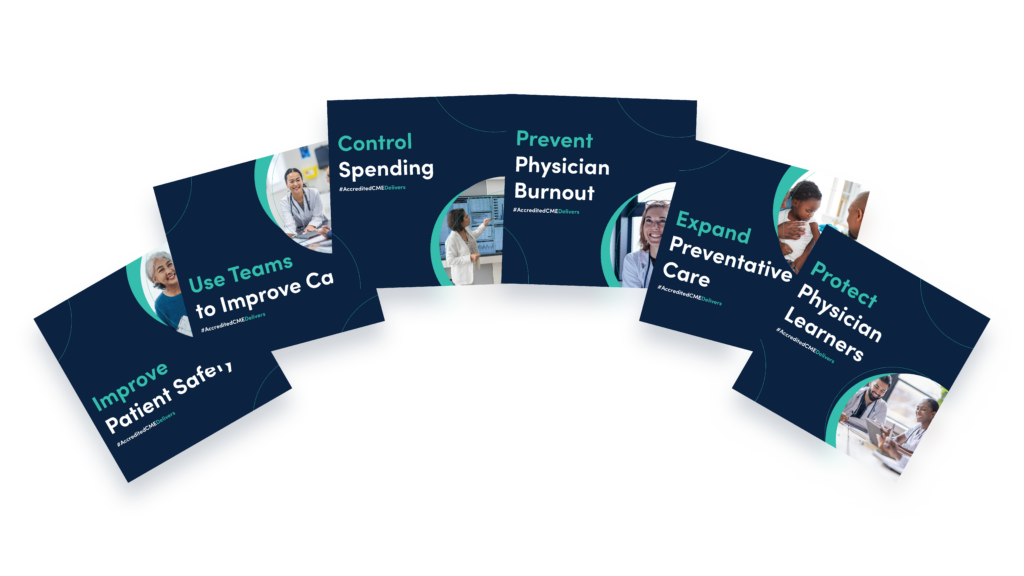The Value of Accredited CME
Accredited continuing medical education (CME) plays an invaluable role helping physicians improve patient care. Below, you’ll learn how accredited CME can drive change, provide solutions, and help you ahieve your goals.

ACCME has created a common set of evidence-based messages that can help healthcare professionals understand the incredibly valuable role you and your CME team play. Developed through a comprehensive review of academic literature and reported outcomes data, the messages in #AccreditedCMEDelivers can help you communicate the value of your work and the critical difference CME can make for healthcare organizations.
The evidence is in. Accredited CME:
Improves patient safety. CME has been shown to be one of the most effective methods for improving physician performance (1).
Controls spending. Unnecessary medical procedures, prescriptions, and hospital readmissions are averted (2, 3).
Increases physician recruitment and retention. CME has been linked to a decrease in physician burnout and turnover (4, 5, 6). Physicians thrive through meaningful work and feedback tied to their own practice.
Protects physician learners. Commercial influence in medical education puts learners at increased risk (7). Accreditation protects the integrity and independence of medical education, ensuring it is accurate and based on best practices (8, 9).
Uses teams to improve care. Interprofessional teams are empowered to work more effectively together to achieve their organization’s quality improvement and strategic goals (10).
Expands preventative care. Accredited CME has a proven track record of life-saving interventions. It has been linked to increases in stroke identification, timeliness of care, cancer screenings, pediatric immunizations, and more (11, 12).
For organizations looking to innovate, investing in accredited CME can provide a remarkably cost-effective solution. CME professionals know how to improve performance, eliminate waste, and inspire and reward valued employees. CME is designed to plan, assess, and create change (13).
Engagement and participation in CME is at record levels, with roughly 250,000 accredited educational activities and over 22 million physician interactions reported in 2024 (14).
Organizations that invest in accredited CME can expect a meaningful return on their investment—it makes change possible for physicians, teams, and our larger healthcare system.
Real Outcomes
The organizations profiled here demonstrate how accredited CME can create meaningful improvements in patient care. Their stories shed light on the role accredited CME plays in solving some of healthcare’s most difficult challenges.

Center for Continuing Medical Education at the University of Chicago Pritzker School of Medicine
Staff Spotlight: Tom Weber, EdM, CHCP, Associate Director
Sign Up for Our Newsletter
Our monthly newsletter contains updates, news, and resources for our community.



